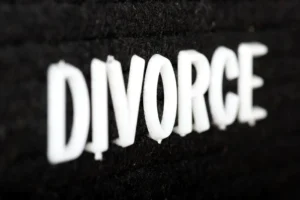What Legal Actions Are Taken Against Companies for Environmental Failures?
The legal landscape governing corporate environmental conduct has evolved dramatically, with an increasing array of legal actions being deployed against companies for environmental failures. These enforcement mechanisms range from civil penalties to criminal prosecutions, and increasingly include innovative litigation strategies targeting corporate environmental misconduct. As regulatory frameworks mature and public awareness of environmental harms grows, companies face mounting legal scrutiny for activities that damage natural resources, threaten public health, or contribute to climate change. Understanding this complex enforcement ecosystem is essential for corporate counsel, environmental attorneys, and business leaders navigating potential liability risks.
The legal system’s response to environmental violations reflects both longstanding principles of accountability and evolving conceptions of corporate responsibility. Traditional enforcement approaches emphasize direct regulatory action for specific violations of environmental statutes, while newer litigation strategies seek to address broader patterns of environmental harm through novel legal theories. This dual approach creates a multifaceted system of accountability that companies must carefully navigate to avoid significant financial and reputational damage.
Recent enforcement trends reveal an increasingly aggressive posture from regulators and private litigants alike. The Environmental Protection Agency (EPA) completed 1,791 enforcement cases in fiscal year 2023, the highest number since 2018, with the majority of inspections focusing on communities overburdened by pollution. Meanwhile, climate-related litigation continues to surge globally, with plaintiffs winning approximately 70% of “climate-washing” cases according to data from the Grantham Research Institute. These developments signal a legal environment increasingly hostile to corporate environmental failures, regardless of whether they stem from negligence, recklessness, or deliberate misconduct.
Civil Enforcement Actions
The EPA and state environmental agencies maintain primary responsibility for civil enforcement of environmental laws, employing a range of administrative and judicial tools to address corporate environmental violations. These civil actions represent the most common legal response to environmental failures, creating significant financial and operational consequences for non-compliant companies.
Administrative enforcement actions constitute the first tier of civil enforcement, allowing agencies to address violations without judicial involvement. These actions typically begin with notices of violation that identify specific regulatory infractions and establish timelines for correction. For more serious violations, agencies may issue administrative orders requiring specific remedial actions, often accompanied by monetary penalties. The streamlined nature of administrative proceedings allows for relatively efficient resolution of environmental violations, though the penalties available through this pathway are typically capped at lower levels than those available through judicial enforcement.
When administrative remedies prove insufficient, agencies may pursue civil judicial enforcement by referring cases to the Department of Justice or state attorneys general. These judicial actions involve formal lawsuits filed in federal or state courts, seeking injunctive relief, civil penalties, and sometimes supplemental environmental projects to benefit affected communities. The EPA assessed more than $167 million in penalties through civil enforcement in fiscal year 2023, demonstrating the substantial financial consequences these actions can impose. Notably, civil judicial enforcement allows for significantly higher penalties than administrative actions, with the Clean Air Act authorizing fines up to approximately $102,638 per day for each violation.
Criminal Prosecutions
For the most egregious environmental violations, prosecutors may pursue criminal charges against corporations and individual executives. Criminal enforcement typically targets willful or knowing violations that demonstrate a deliberate disregard for environmental laws and regulations. These cases represent the most severe legal response to environmental failures, carrying the potential for substantial fines and imprisonment for responsible individuals.
Criminal prosecutions under environmental statutes focus on conduct that demonstrates culpable intent rather than mere negligence or oversight. The EPA’s criminal enforcement criteria, established in the 1994 Devaney Memorandum, prioritize cases involving significant environmental harm, culpable conduct, and repeated violations. This approach reserves criminal enforcement for truly egregious cases, such as deliberate misconduct resulting in serious contamination, falsification of records, or operation without required permits after receiving notice of violations.
The consequences of criminal conviction can be devastating for both companies and individuals. Corporate defendants face substantial monetary penalties, often in the millions of dollars, along with probationary periods requiring enhanced compliance measures. Individual executives and employees may face personal fines and imprisonment, with many environmental statutes authorizing sentences of up to five years for knowing violations. The Resource Conservation and Recovery Act (RCRA), for example, imposes criminal penalties for knowingly transporting hazardous waste to unpermitted facilities or treating hazardous waste without proper authorization. These criminal sanctions create powerful deterrents against deliberate environmental misconduct, particularly for corporate decision-makers who might otherwise view civil penalties merely as a cost of doing business.
Class Action Lawsuits
Beyond government enforcement, companies increasingly face class action lawsuits from individuals and communities affected by environmental contamination. These private litigation efforts provide an alternative pathway for addressing environmental harms, particularly when regulatory enforcement proves inadequate or when affected parties seek direct compensation for damages.
Class action mechanisms allow numerous plaintiffs with similar claims to consolidate their cases, creating efficiencies in litigation while amplifying the potential financial impact on defendant corporations. Environmental class actions typically involve claims related to toxic exposure, property damage, or health impacts resulting from pollution or contamination. The PFAS litigation currently unfolding across the United States exemplifies this approach, with numerous communities pursuing claims against chemical manufacturers for contaminating drinking water with these persistent “forever chemicals.”
The legal theories underlying environmental class actions vary widely, encompassing traditional tort claims like negligence and nuisance alongside more specialized environmental causes of action. Strict liability theories prove particularly important in this context, allowing plaintiffs to establish liability without proving negligence when activities are deemed abnormally dangerous. The Comprehensive Environmental Response, Compensation, and Liability Act (CERCLA) has influenced courts’ willingness to impose strict liability in environmental contamination cases, reflecting a broader societal judgment that certain environmental risks warrant heightened accountability regardless of fault.
Climate Change Litigation
A rapidly evolving category of environmental litigation involves climate change lawsuits targeting companies for their contributions to global warming and related environmental impacts. These innovative cases represent a new frontier in corporate environmental liability, seeking to hold companies accountable for broader patterns of environmental harm beyond specific regulatory violations.
Climate litigation against corporate defendants has expanded dramatically in recent years, with cases nearly doubling between 2017 and 2020. These lawsuits employ various legal theories, including public nuisance, failure to warn, consumer protection violations, and trespass. In 2023, the California Attorney General sued Exxon Mobil Corporation for its alleged role in causing and accelerating climate change, illustrating the increasing willingness of government entities to pursue novel legal theories against corporate contributors to climate change.
A particularly significant development in climate litigation involves cases seeking compensation for specific climate-related damages. In March 2024, the Higher Regional Court of Hamm in Germany heard a claim against energy company RWE brought by a Peruvian farmer seeking compensation for climate damages affecting his property. Similarly, Puerto Rican municipalities have filed claims against fossil fuel companies for allegedly exacerbating hurricane damage through their contributions to climate change. These cases represent an emerging “loss and damage” litigation trend that could significantly expand corporate liability for climate impacts if courts prove receptive to the underlying legal theories.
Greenwashing Litigation
As companies increasingly promote their environmental credentials, they face growing legal scrutiny for potentially misleading environmental marketing claims. This “greenwashing litigation” targets corporate statements about sustainability, climate commitments, or environmental performance that allegedly misrepresent actual practices or impacts.
Greenwashing cases have proven remarkably successful for plaintiffs, with claimants winning approximately 70% of completed cases according to data from the Grantham Research Institute. These lawsuits typically involve consumer protection claims alleging that companies have deceived consumers through false or misleading environmental claims. The legal consequences can be substantial, with significant financial penalties and reputational damage for companies found to have engaged in deceptive environmental marketing.
The Italian Competition and Market Authority’s €5 million ($5.6 million) fine against oil company Eni illustrates the potential consequences of greenwashing. Regulators determined that Eni’s marketing campaign deceptively suggested its biofuel diesel had positive environmental impacts, when in fact the palm oil-based fuel reportedly released three times as many emissions as conventional diesel. This case demonstrates how regulatory authorities increasingly scrutinize environmental marketing claims, requiring substantiation beyond mere aspirational statements.
Strict Liability Enforcement
Many environmental statutes impose strict liability for violations, allowing enforcement without proof of negligence or intent. This liability framework significantly streamlines enforcement actions by eliminating the need to establish fault, focusing instead on the simple fact of non-compliance regardless of the reasons behind it.
CERCLA exemplifies this strict liability approach, allowing the EPA to hold potentially responsible parties liable for cleanup costs without proving negligence. The statute’s liability scheme has profoundly influenced environmental enforcement, establishing a framework where parties can be held responsible based solely on their relationship to contaminated sites rather than their culpability in causing contamination. This approach reflects a policy judgment that environmental cleanup costs should be borne by those with connections to contaminated properties rather than taxpayers or innocent parties.
The strict liability principle extends beyond CERCLA to various other environmental regulatory frameworks. The Clean Water Act, for example, imposes strict liability for unpermitted discharges of pollutants into waters of the United States, regardless of whether the discharger intended to violate the law or took reasonable precautions. This approach significantly strengthens enforcement capabilities by eliminating potential defenses based on good faith efforts or reasonable care, focusing instead on the environmental harm resulting from non-compliance.
Corporate Penalties and Settlements
The financial consequences of environmental violations can be substantial, with corporate penalties ranging from thousands to billions of dollars depending on the nature and severity of the misconduct. These penalties serve both punitive and deterrent functions, imposing direct costs for past violations while discouraging future non-compliance.
Civil penalties under environmental statutes can reach staggering amounts for serious or prolonged violations. The Clean Air Act authorizes penalties up to approximately $102,638 per day for each violation, creating potential liability in the millions or even billions of dollars for long-term non-compliance. In practice, penalties typically reflect various factors including the economic benefit of non-compliance, the gravity of the violation, the violator’s compliance history, and good faith efforts to comply. The EPA’s penalty policies provide frameworks for calculating proposed penalties, though final amounts often result from settlement negotiations rather than maximum statutory penalties.
The Volkswagen “dieselgate” scandal illustrates the potential magnitude of environmental penalties for deliberate violations. After installing software in vehicles to deceive emissions testing, Volkswagen faced approximately $34.69 billion in fines and legal costs worldwide. This included a $2.8 billion criminal fine imposed by a U.S. federal judge in 2017 and a $125 million penalty in Australia in 2019. The unprecedented scale of these penalties reflected both the deliberate nature of the violations and their significant environmental impact, with affected vehicles reportedly producing 40 times the permitted nitrogen oxide pollution.
Injunctive Relief and Remediation Requirements
Beyond monetary penalties, environmental enforcement typically includes injunctive relief requiring companies to address underlying violations and prevent future non-compliance. These equitable remedies often prove more significant than financial penalties in terms of their operational impact and long-term costs.
Compliance orders represent the most common form of injunctive relief, requiring specific actions to correct violations and achieve regulatory compliance. These orders may mandate installation of pollution control equipment, implementation of monitoring systems, or modification of operational practices to prevent future violations. The EPA secured commitments of over $3.8 billion for such compliance measures in fiscal year 2023, demonstrating the substantial investment these requirements can impose on violating companies.
Remediation obligations constitute another critical form of injunctive relief, particularly for violations involving environmental contamination. These requirements typically involve investigation and cleanup of affected areas, restoration of damaged resources, and long-term monitoring to ensure effective remediation. The Exxon Valdez case exemplifies this approach, with Exxon agreeing to pay $900 million to settle civil claims related to the 1989 oil spill that released approximately 11 million gallons of oil into Alaska’s Prince William Sound. These funds supported extensive cleanup and restoration efforts addressing the spill’s devastating impacts on marine ecosystems and coastal communities.
Supplemental Environmental Projects
Until recently, many environmental settlements included Supplemental Environmental Projects (SEPs) requiring violators to implement environmentally beneficial projects beyond mere compliance with regulations. These projects provided tangible environmental benefits to affected communities while potentially reducing the monetary penalties imposed on violating companies.
SEPs typically involve projects related to the underlying violation but extending beyond regulatory requirements. For example, a company that violated air pollution limits might fund a project to monitor air quality in affected neighborhoods or implement emission reduction measures beyond those required by law. These projects create direct environmental benefits for communities affected by violations, addressing environmental justice concerns by directing resources toward areas disproportionately impacted by pollution.
After a period of disfavor under the previous administration, SEPs have returned as an enforcement tool under the current EPA leadership. In fiscal year 2023, the EPA concluded 44 settlements including SEPs valued at over $13 million. This revival reflects recognition of SEPs’ value in addressing environmental justice concerns and providing tangible benefits to affected communities beyond mere regulatory compliance.
Environmental Justice Considerations
Recent enforcement trends reflect increasing emphasis on environmental justice, with agencies prioritizing cases affecting communities disproportionately impacted by pollution. This approach seeks to address historical patterns of environmental inequality by directing enforcement resources toward areas facing the greatest environmental burdens.
The EPA has explicitly incorporated environmental justice considerations into its enforcement priorities, focusing inspections and enforcement actions on facilities in communities with potential environmental justice concerns. This prioritization reflects recognition that certain communities—particularly low-income communities and communities of color—have historically faced disproportionate environmental burdens while receiving less regulatory attention and enforcement.
The Biden administration has particularly emphasized environmental justice in its enforcement approach. In fiscal year 2023, the majority of EPA’s civil enforcement inspections and over half of its enforcement cases focused on communities overburdened by pollution and with potential environmental justice concerns. This targeting represents a significant shift in enforcement priorities, directing resources toward addressing longstanding patterns of environmental inequality rather than distributing enforcement efforts evenly across all regulated entities.
International Enforcement Challenges
Environmental enforcement becomes particularly complex when addressing cross-border pollution or multinational corporate activities. These international dimensions create jurisdictional challenges that can complicate enforcement efforts and require coordination across national boundaries.
Transnational environmental litigation has emerged as a significant trend, with plaintiffs increasingly pursuing claims against corporations for environmental harms occurring in different countries. The lawsuit by four Indonesian islanders against Swiss cement maker Holcim exemplifies this approach, seeking compensation for climate change impacts affecting their island. Similarly, Peruvian farmer Saúl Luciano Lliuya’s case against German energy company RWE for climate damages demonstrates the growing willingness of plaintiffs to pursue transnational claims for environmental harms.
These cross-border cases face significant procedural and jurisdictional hurdles, including questions about applicable law, forum selection, and enforcement of judgments across national boundaries. Despite these challenges, they represent an important frontier in environmental litigation, potentially expanding corporate accountability for global environmental impacts beyond traditional jurisdictional limitations.
Emerging Trends in Environmental Enforcement
Several emerging trends suggest continued evolution in the legal response to corporate environmental failures. These developments indicate a broadening conception of environmental liability that extends beyond traditional regulatory violations to encompass broader patterns of environmental harm and deception.
Corporate accountability for climate impacts represents perhaps the most significant emerging trend, with numerous lawsuits seeking to hold companies responsible for their contributions to climate change. These cases employ various legal theories, including public nuisance, failure to warn, and consumer protection violations. While many of these cases remain in preliminary stages, they signal a potential expansion of corporate environmental liability to include climate-related harms previously considered beyond the reach of traditional legal remedies.
Another important trend involves increasing scrutiny of corporate environmental disclosures and commitments. As investors and consumers place greater emphasis on environmental performance, companies face growing legal risks related to potentially misleading statements about sustainability initiatives or climate goals. This trend extends beyond traditional greenwashing claims to include securities litigation alleging inadequate disclosure of climate-related financial risks, creating new dimensions of legal exposure for public companies.
Compliance Strategies for Corporate Risk Management
Given the significant legal risks associated with environmental violations, companies must implement robust compliance programs to prevent violations and mitigate potential liability. These proactive measures represent the most effective approach to managing environmental legal risks, particularly as enforcement continues to intensify across multiple fronts.
Comprehensive environmental auditing provides the foundation for effective compliance, allowing companies to identify and address potential violations before they attract regulatory attention. Regular audits should examine both technical compliance with specific regulatory requirements and broader environmental management systems to ensure they adequately address all relevant environmental risks. Many regulatory programs offer incentives for self-disclosure of violations discovered through voluntary audits, potentially reducing penalties for companies that promptly report and correct identified non-compliance.
Beyond technical compliance, companies increasingly recognize the importance of integrating environmental considerations into broader corporate governance structures. This approach involves establishing clear lines of accountability for environmental performance, incorporating environmental metrics into executive compensation, and ensuring board-level oversight of environmental risks and opportunities. These governance mechanisms help ensure that environmental compliance receives appropriate attention and resources within the organization, reducing the likelihood of violations that could trigger enforcement actions.
Conclusion: The Evolving Landscape of Environmental Enforcement
The legal actions taken against companies for environmental failures continue to evolve, reflecting changing societal expectations regarding corporate environmental responsibility. This evolution encompasses both traditional enforcement mechanisms targeting specific regulatory violations and emerging litigation strategies addressing broader patterns of environmental harm.
Traditional enforcement through civil and criminal actions remains the primary legal response to environmental violations, with substantial penalties and injunctive requirements for non-compliant companies. The EPA’s enforcement statistics demonstrate the continuing importance of these mechanisms, with nearly 1,800 cases completed in fiscal year 2023 resulting in over $167 million in penalties and $3.8 billion in compliance commitments. These figures underscore the significant financial and operational consequences that can result from environmental violations, creating powerful incentives for proactive compliance efforts.
Alongside these traditional enforcement approaches, newer litigation strategies targeting corporate contributions to climate change and misleading environmental claims represent an expanding frontier of environmental liability. The success rates in climate-washing litigation and the growing number of climate damage lawsuits signal increasing legal risks for companies whose activities or representations relate to environmental impacts. As these novel legal theories continue to develop, companies face an increasingly complex landscape of potential environmental liability extending well beyond traditional regulatory compliance.
For corporate counsel and environmental attorneys, navigating this evolving enforcement landscape requires both technical understanding of specific regulatory requirements and strategic awareness of emerging liability risks. By implementing robust compliance programs, conducting thorough risk assessments, and carefully managing environmental communications, companies can reduce their exposure to the increasingly diverse legal actions taken against environmental failures. This proactive approach represents the most effective response to an enforcement environment characterized by intensifying scrutiny across multiple legal dimensions.
Citations:
- Holding Corporate Polluters Accountable for Climate Damages
- Top Controversial Lawsuits for Environmental Triumph
- 2022 Environmental Enforcement Trends Update
- Emerging Trends in Environmental Litigation
- PFAS Class Action Lawsuit Overview
- Examples of Corporate Greenwashing Practices
- EPA Basic Information on Enforcement
- Environmental Enforcement Presentation 2018
- University of Michigan Environmental Law Article
- EPA 2021 Enforcement Statistics Report
- Climate Washing Litigation Insights
- EPA Civil Enforcement FY 2023 Results
- Climate Integrity Lawsuits Database
- Corporate Greenwashing Fines Overview
- U.S. Intensifies Environmental Crime Enforcement
- Trends in ESG Litigation Developments
- DOJ EPA 95M Settlement with Stericycle
- EPA Clean Air Act Penalty Math
- Civil vs Criminal Environmental Violations
- CERCLA Environmental Response and Liability
- EPA Enforcement Decline During Trump Era
- S&P Global Environmental Litigation Research
- EPA Enforcement Results FY 2020
- Key Climate Litigation Cases of 2024
- Global Trends in Climate Litigation 2024
- Stanford Law Environmental Litigation Report
- EPA FY2022 Enforcement Focus on Justice
- Climate Litigation Against Fossil Fuel Companies
- Climate Change Litigation in the U.S.
- Profiting from Pollution Legal Analysis
- Climate Litigation Updates March 2025
- California Oil Industry Legal Strategy
- EPA Civil and Cleanup Enforcement Cases
- EPA Enforcement Cuts in Trump Administration
- January 2025 Climate Case Updates
- EPA Significant Environmental Enforcement Cases
- EPA FY 2023 Enforcement Data Trends
- Supreme Court Environmental Cases 2025
- Wikipedia List of Environmental Lawsuits
- ScienceDirect Study on Environmental Litigation
- Climate Case Chart Search Tool
- Noteworthy Environmental Cases in 2025
- Trends in Climate Litigation Analysis
- Environmental Litigation Trends Beyond Climate
- Environmental Lawsuits That Helped Society
- Law360 Environmental Law News
- Rise of Climate Lawsuits Explained
- Environmentalist Lawsuits State Law Claims
- NGFS Report on Climate Litigation Trends
- Environmental Groups Sue German Companies
- Plastics Litigation Tracker Database
- Punishing Corporate Environmental Violations
- U.S. Environmental Laws Overview
- Chicago Law on Environmental Economics
- ABA Guide to Environmental Law
- EPA Workshop on U.S. Environmental Law
- Toyota Pays 180M for Clean Air Violations
- Responsible Corporate Officer Doctrine
- Consequences of Environmental Law Non-Compliance
- U.S. Attorney 95M Settlement with Stericycle
- Corporate Officer Liability for Environmental Activities
- Federal Environmental Crimes Defense
- EPA Enforcement Data and Results
- U.S. Environmental Enforcement Activity Declines
- Acta Group on Environmental Enforcement
- EPA Enforcement Results FY 2022
- EPA Enforcement Results FY 2021
- Effectiveness of Civil Lawsuits in Environment
- EPA FY 2024 Criminal Enforcement Results
- Trends in ESG Litigation and Enforcement


















